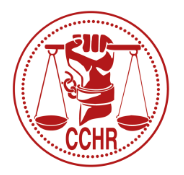 Death of a child while under care of psychiatric hospital personnel reeks of the barbarism common when the lunatic asylums of the 19th and 18th centuries flourished in Europe. Yet the use of deadly restraint involving children in psychiatric asylums is ongoing.
Death of a child while under care of psychiatric hospital personnel reeks of the barbarism common when the lunatic asylums of the 19th and 18th centuries flourished in Europe. Yet the use of deadly restraint involving children in psychiatric asylums is ongoing.
Criminal behavior on the part of asylum personnel has not only gone largely unreported, but unprosecuted as well.
Charles G. Curie, the administrator of SAMHSA (Substance Abuse and Mental Health Services Administration) in 2001-2006 had the eventual elimination of both restraints and seclusion in psychiatric hospitals his main priority. In his words:
“Seclusion and restraint – with their inherent physical force, chemical or physical bodily immobilization and isolation – do not alleviate human suffering. They do not change behavior. And they do not help people with serious mental illness better manage the thoughts and emotions that can trigger behaviors that can injure them or others. Seclusion and restraint are safety measures of last resort. They can serve to retraumatize people who already have had far too much trauma in their lives. It is my hope that we can create a single, unified policy – a set of primary principles that will govern how the Federal Government approaches the issue of seclusion and restraint for people with mental and addictive disorders.”
Death from Restraints
Not surprisingly, the Psychiatric Times voiced this opinion, “Most experts in the emergency field believe, however, that there is an essential role for these procedures in the care of patients in the acute care setting.”
However, studies have proven that restraint can bring about death from a variety of physiological reactions. They include:
- Asphyxiation – This is the most common cause of death during restraint. If the body’s position interferes with breathing, asphyxiation can result. This is most common when restrained patients are placed in a prone position. A patient under the influence of psychotropic drugs is even more vulnerable to asphyxiation.
- Aspiration – Restraining someone in a supine (on their back) position, especially when that person has a lower level of consciousness due to psychiatric drugging, can result in aspiration, as the patient is unable to protect his airway.
- Emotional Extremes – A person under restraint may release body chemicals that sensitize the heart, producing rhythm disturbances that can result in sudden death.
Young Girl Dies under Restraint
As a child, Edith Campos was shy and well-behaved. But when she entered her teen years, she started to hang out with the wrong crowd and began taking drugs. Her family, possibly lured by the PR generated by the Desert Hills psychiatric center in Tucson, Arizona sent her there for help.
When she arrived at the facility she was frightened, and clutched a comforting photograph of her family. But photos were not allowed at the facility, and a 200 pound mental health aide insisted on following the rules.
Edith resisted. And for this, she was crushed face down on the floor in a “therapeutic hold.” Edith Campos didn’t have a chance. She was killed by a man almost twice her size.
Kirke Cooper, director of business development for Desert Hills defended the brutality of the staff member who murdered Edith. He states “It was a tragedy that this girl died in our care. But I don’t feel there was any wrongdoing on the part of our staff. They are all well-trained in physical control and seclusion.”
One wonders what planet Mr. Cooper is from, but generally here on Earth we don’t call murdering a petite teenage girl the result of the perpetrator being “well-trained.”
Mental Health Care Workers Blow the Whistle on Restraints
Psychologist Wesley Crenshaw has conducted a national survey on restraint use. He states “I can’t understand why patients don’t die more often with all the things that happen on a daily basis. You have people who are `cowboying’ it. People who really want to get in there and show they’re the boss.”
Wanda Morh, who directs psychiatric mental health nursing at University of Pennsylvania has stated “You can’t believe how many times a kid gets slammed into restraints because an argument will ensue after calling a staff member a name.”
Seemingly, the early barbarism rampant in Victorian mad houses is alive and well in psychiatric facilities here and abroad.
We as parents and grandparents must keep our children safe and out of the hands of the psychiatric industry. Family tragedies can be avoided only when one’s faith is no longer placed in the bloodied hands of those professing to help.
SOURCES:
http://www.mentalhealthamerica.net/positions/seclusion-restraints#edn1
http://www.psychiatrictimes.com/articles/use-restraint-and-seclusion-emergency-department
https://ww1.cpa-apc.org/Publications/Archives/CJP/2003/june/mohr.pdf
http://articles.courant.com/1998-10-12/news/9810090771_1_mental-retardation-aides-patient


Baker Act In Florida restraints common and hospitals? for profit laying on the charges
My case 39K